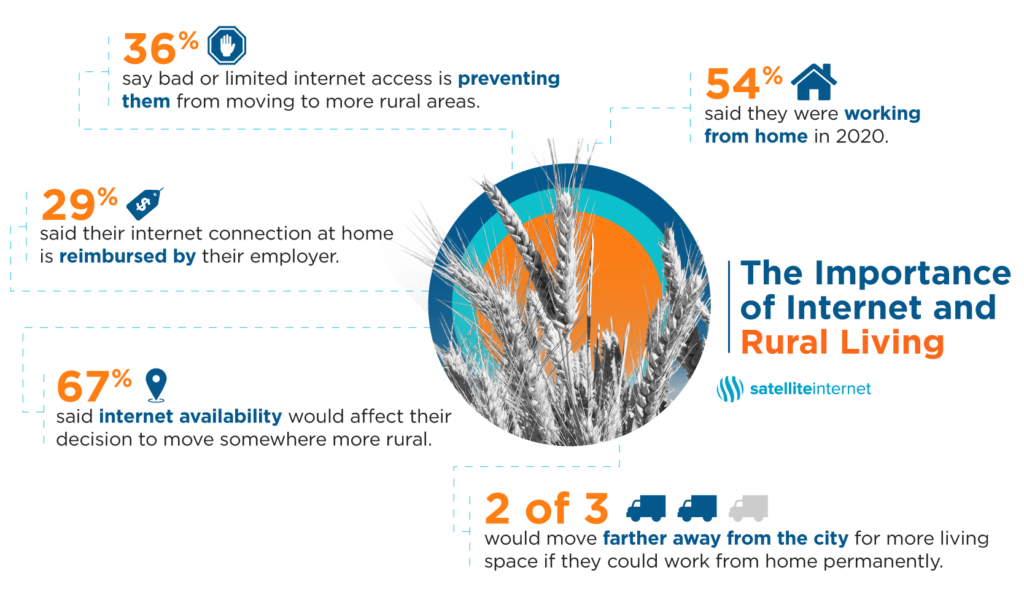It’s no surprise that the switch to WFH has increased the desire for a bigger living space. Quarantining inside an apartment can be rough. Two out of three people say they’d move away from the city if they could WFH permanently (which will be the new normal for tens of thousands of workers, even after the pandemic).4,5 But for most of these people who could help revitalize rural areas, a good internet connection is essential.
In our survey, 67% of people say they’ll take internet availability into consideration before moving to a rural area. This highlights the importance of expanding internet access into underserved areas, which has been shown to have a positive socioeconomic impact.6 People are craving the extra space and affordable housing they can get in rural areas, but they need to know how to get good internet in the country.
There are plenty of people in rural and urban areas who are struggling to stay connected during the pandemic: 29% of respondents said their current internet connection has difficulties supporting WFH or online learning. And over 30% are using a hotspot or mobile tethering at home to get internet access, which is often slower and more expensive than internet plans available in urban areas. Satellite internet is a good option for people looking for better coverage but has its own speed limitations.
